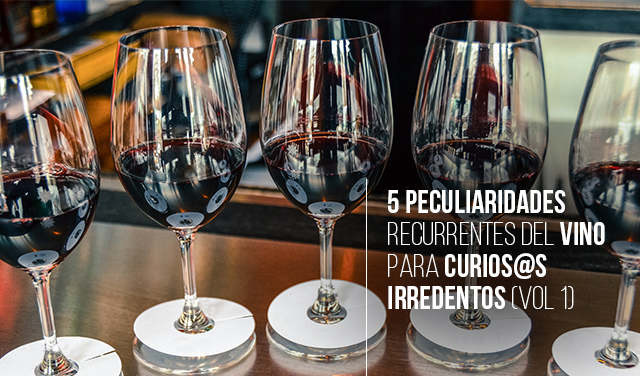5 Recurring peculiarities of wine for unredeemed onlookers (Vol.1)

You have spoken and we have listened. Many are your doubts and preoccupations on wine culture. This unites us, no matter how far away we are from you. Our Club, your Club, shortens distances, lets us know what interests you have and also feeds your desire to learn and our desire to provide you with the right skills to make you feel comfortable and, above all, enjoy wine and being with it.
Here we answer the most frequently asked questions about the world of wine that you have sent us over the last month in the "Ask the Expert" section.
1. Where do wine aromas come from...? (Or why does Sauvignon Blanc smell of "pipi de chat")
A recurring theme if ever there was one, the source of aromas in wine is a timeless classic. Remember that during a wine tasting, 90% is pure nose....
We can categorize the aromas of a wine in various ways, but we will do so by its origin.
Briefly:
• Primary (or varietal) aromas: are those from the grape variety used. Broadly speaking, we talk about a fruity, floral, vegetal series: apple, peach, red fruit, jasmine, white rose, asparagus, etc...
• Secondary Aromas: are those arising during fermentation: lactic aromas (yogurt, butter), yeast (bread dough), etc...
• Tertiary aromas (or of ageing): They shape the "bouquet" inherent in the aging of wine and can be easily identified as aromas of leather, game, wood, tobacco, etc...
Okay.... But... why say a Chardonnay grown in warm climates gives us notes of stoned fruit, apricot for example? Or why do many French Sauvignon Blanc present notes reminiscent of "cat pee"? And the source of that hydrocarbon odour of some aged Rieslings, where does it come from?
Aromas are nothing more than a way of interpreting, through smell, the chemical structures found in flowers, plants, spices, etc..... The sequence is: "I smell - I interpret - I store information in my brain, in my sensory file". When the molecular structure appears in a wine, our brain does the same... receives information and searches our data file for what it corresponds to. Actually, it is not that the wine smells like apricot, but contains the same molecular structure responsible for the smell of apricot.
2. Malolactic fermentation
This is the process of converting sharp tasting malic acid into lactic acid. To smoothen these sometimes unpleasant notes, malic acid is transformed into (much softer) lactic acid by the action of lactic acid bacteria. As a side effect, flavours reminiscent of butter and nuts develop.
This process is suitable in excessively acidic wines but actually malolactic fermentation is not a type of fermentation in itself (it does not involve yeast) but is a process for biological decomposition of acidity.
3. Balance?
There is much talk of the balance of a wine (or lack of) as a discriminating factor in if we have a good wine or “flat” wine...
Well, balance is just full harmony in the sensory components of a wine. The integration of alcohol, the presence of fruit, acidity level and the role of tannins are the generic parameters to assess the balance of a wine.
Do the test with any wine at your next tasting. Pay attention to any sensory components on the nose or palate that outshine the rest, they will be much more noticeable. Perhaps only the fruit is emphasized, or excessive acidity, aggressive tannins or alcohol on the palate and nose, dominates everything. In any case, the wine would be showing an obvious lack of balance.
4. Back with terroir...
The terroir (or phenotype) is the set of features expressed by wine from a specific region: Climate, soil, topography, local grape varieties, native yeast cultures and oenological & viticultural practices used for winemaking....
We could say that the terroir is no more [or no less] than the essence of a place expressed through its wines.
5. Tannins, tannins, tannins...
We are aware that there is some confusion about what they are and what these so called tannins bring to wine... Right? Let's look at it a very simple way:
• What are they?
Tannins are organic matter with an astringent taste present in the skin, stems and seeds of grapes. They are also found in the wood of oak barrels.
• What is their role and how do they contribute to wine?
Tannins are made up of phenolic compounds (responsible for colour, aroma and structure in wine). Essential.
White wines have less tannins present due to little contact of the skin with grape juice. However, in reds, maceration of the skin goes hand in hand with the extraction of tannins, a fact that gives wine more life but in turn makes longer aging necessary in order to temper and soften them.
On the palate, tannins have an astringent taste that stops salivation, a dry feeling in the mouth, leaving a trail of bitterness. We can distinguish between soft or sweet tannins (provided by the fruit) and hard tannins (from oak aging).
Keep sending in your questions to our experts. We also promise to respond to all your doubts in future instalments here at your blog.
Good health.... To your curiosity!
